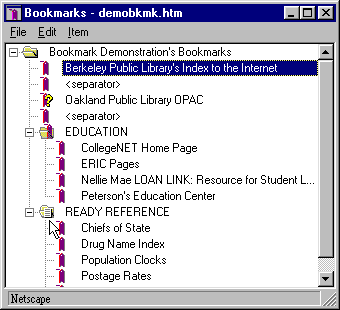
| There are a number of techniques and tools that you can use to make your Internet searching more productive and efficient. This page assumes the use of Netscape Navigator as your browser. |

| Keystroke | Action |
| Ctrl + B | open Bookmark window |
| Ctrl + C | copy item to clipboard |
| Ctrl + V | paste item from clipboard |
| Ctrl + X followed by Del | cut and delete |